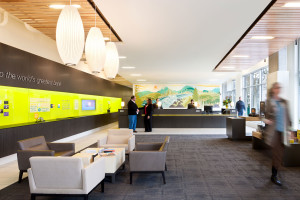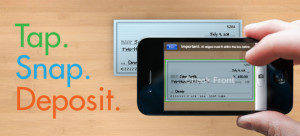Omni-Channel Experiences, Still Far from Reality!!!
 Can you complete let alone win a Formula One race with flat tires?
Can you complete let alone win a Formula One race with flat tires?
Don’t think I need to answer that question but am sure you’re thinking, what in the world is this guy writing about and what has this got to do with omni-channel experiences. Well, it does because I feel the same way every time I think about driving omni-channel frictionless consumer experiences.
Why? – Because we are trying to create a world of connected experiences on top of a massively “fragmented” foundation. Take a read:
Pretty much anyone who has been directly or indirectly involved with marketing, eCommerce, consumer experiences, brand strategies or figuring out unique ways to engage consumers across various online & offline touch points, would have experienced or expressed a strong vision & desire to move from being multi-channel to cross-channel and now omni-channel. And it hasn’t just been a change of phrases we all so dearly love but a reflection on how the consumer engagement and the entire ecosystem has evolved with all strategies driven by a single most desirable outcome – enabling seamless, frictionless omni-channel consumer experiences.
But have brands truly been able to drive “omni-channel” consumer experiences consistently?
The answer is a big NO despite strategies, agency partnerships, availability of data and technology and of course most importantly a well defined vision. There have been instances of brands driving these connected seamless experiences but these have been rather far and few, limited to specific campaigns or programs that may have lasted a few weeks or months at best but nothing which is “always on”. So what is preventing this to happen? It’s FRAGMENTATION that exists in three core areas :
1. Fragmentation in Marketing Technology Ecosystem
A foundational challenge often acknowledged globally however still unresolved primarily because it requires a fundamental shift in the technology ecosystem. The types of marketing solutions and solution providers would need to evolve from solving problems in compartments like data, analytics, CRM, customer experience, eCommerce and others to thinking about “experiences” that span across channel & media spectrum. Refer to Gartners’s marketing technology
transit map or Scott Brinker’s famous marketing technology landscape, driving a connected seamless experience requires stitching these different pieces leveraging both data & technology at its core. This does not only involve a complex and challenging data integration process but also a reasonably expensive initiative that involves multiple technology vendors and a world class System Integrator who knows what he is doing and is able to converge creative, media, brand strategy and technology together. So either brands need to continue to stitch these pieces with millions of dollars OR we finally have a Marketing Operating System (a concept I am passionate about) that does that for marketers out of the gate. With all the technology acquisitions by Adobe, IBM, Oracle and Salesforce of the world, this may be a reality soon. Sitecore’s recent acquisition of the commerceServer is another step in this direction.

2. Fragmentation in Data
As brands and agencies scramble to adopt multiple technology platforms to drive consumer engagement across channels, the natural outcome is a world of fragmented data sets. While technology innovation is leading to the capture, extraction and storage of a lot of more data or if I may dare to say “big data”, it is still isolated by channel which then requires a herculean effort to connect this data into an “Enterprise Data Management Platform”. Historically the concept of a DMP has focused more on 1st party and 3rd party audience data to drive targeting and personalization for display advertising but it now needs to expand that reach across channels and be the sole “data management layer” that connects with “any” media or content publishing technology in your ecosystem, across paid, owned & earned channels. Of course easier said or written than done but possible at least once a more consolidated technology system sits on top that eventually drives a more unified data collection – a true 360 view of the consumer.
3. Fragmentation in Agency & Operating Model
While the technology & data fragmentation is more obviously noticeable, the fragmentation in the underlying agency operating model goes unnoticed. What does that mean? Two very simple facts:
- Even with the Digital AORs how many brands use multiple specialized agencies to manage Search, CRM, eCommerce and so on while the digital AOR drives the broader brand strategy. This isn’t the root cause but a symptom of agencies that are yet to become omni-channel in their own capabilities
- Secondly, if brands do happen to engage a single agency across channels, the service model within the agencies will enforce a fragmented team structure. On one hand that’s great because it provides subject matter experts and specialists across channels but more often than not, it leads to a very myopic & isolated view of the consumer. It lacks a horizontal cross channel perspective from anyone on the agency side.
While I am sure there may be enough fallacies to my hypothesis but I am also sure that for every single brand that is enabling an omni channel seamless consumer experience, you will find another 99 that are struggling because of the fragmented ecosystem. There is no single solution however a gradual shift towards a holistic and connected technology ecosystem will play a fundamental role in getting us there.
I was fortunate to speak at shop.org with Jacob Hawkins of aeropostale. They are doing some really amazing things from an omnichannel perspective.
 Over the years, my background in IT marketing and product management has brought me close to the subject of how a software should be extended to new channels. I can recall at least five occasions on which I’ve been involved with spec’cing channel support in the past 15-odd years:
Over the years, my background in IT marketing and product management has brought me close to the subject of how a software should be extended to new channels. I can recall at least five occasions on which I’ve been involved with spec’cing channel support in the past 15-odd years:- ERP in Branch Office in the mid ’90s
- Internet ERP in the late ’90s
- Electronic Bill Payment in the mid ’00s
- Mobile Banking in the late ’00s, and
- Social Media Sales and Customer Support in the last one year.
On each occasion, the initial expectation of the market was identical: The software must do everything on the new channel that it did on all the old channels. Attribute it to customers affected by hype or consultants sitting in ivory towers or whatever, but a software gained legitimacy to its claim of supporting a new channel only when it permitted every step of every business process to happen on the given channel. Let me call this the “multichannel support” wave.
In each instance, it took a few years for the market to appreciate that each channel had its own strengths and accept that there was nothing wrong if the software only supported those features that played up to the strength of the respective channel. For example, since Internet was a great way to extend an ERP to customers, suppliers and partners without requiring specialized hardware or leased lines, it became okay for ERPs to only support marketing, sales and channel processes via the web to begin with.
 Soon thereafter, the market recognized that there was no point in making the software support a certain feature on a certain channel when the corresponding business process wasn’t likely to happen on that channel. Out went “web-enabled MRP” from an ERP’s production module, for example.
Soon thereafter, the market recognized that there was no point in making the software support a certain feature on a certain channel when the corresponding business process wasn’t likely to happen on that channel. Out went “web-enabled MRP” from an ERP’s production module, for example.
It took a while longer for customers to understand that their internal and external stakeholders don’t think so much in terms of channels as overall user experience. And for vendors to respond by offering superior UX by splitting a single business process across multiple channels in such a way that each channel leveraged its strength and the customer found each hop natural. I call this “omnichannel support”. Or “interconnected retail”, as Home Depot’s CEO Frank Blake calls it in this FORTUNE magazine interview to describe ”as seamless an experience as possible for you as a consumer, whether you’re interacting online or in the store.”
To take “buy mortgage product” as an indicative business process in the context of a retail bank, omnichannel would translate to the following steps on different channels:
- Mobile: Hear about a new low-interest mortgage product from a friend on social media
- Desktop: Check out the online buzz about this product, visit the bank’s website to learn more about it
- Branch: Find out the finer points of this product, sign up for it, fill forms, and submit documentation.
As I’d highlighted in Jumping On The Omnichannel Banking Bandwagon, multichannel banking is neither necessary nor feasible in most cases and omnichannel banking is the practical way forward for most banks. I recently noticed that omnichannel commerce also fits in nicely with the new buyer journey postulated by McKinsey.
 Once all key processes are omnichannel-enabled, or even in parallel, I envisage the next wave of channel support in which a bank develops new functionality that exclusively leverage the strengths of a given channel. For example, Mobile Remote Deposit Capture and ATM Driving Directions, which are features that exploit camera, GPS, accelerometer and other standard smartphone features that are absent from all other channels. For the lack of a better expression, let me call this “omniplus commerce” for now.
Once all key processes are omnichannel-enabled, or even in parallel, I envisage the next wave of channel support in which a bank develops new functionality that exclusively leverage the strengths of a given channel. For example, Mobile Remote Deposit Capture and ATM Driving Directions, which are features that exploit camera, GPS, accelerometer and other standard smartphone features that are absent from all other channels. For the lack of a better expression, let me call this “omniplus commerce” for now.